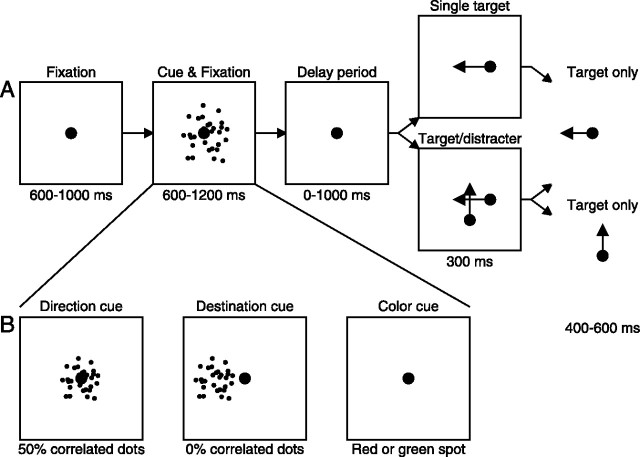Figure 1.
Schematic diagrams of the basic cue task that the subjects performed. Each square depicts a snapshot of the monitor display at a particular moment during the trial. A, The sequence of snapshots illustrates the structure of each trial. At the start of each trial, the subjects fixated a central target for 600–1000 ms. They continued to fixate on this central target while a cue was presented for 600–1200 ms and during a delay period that lasted 0–1000 ms. The fixation target was then extinguished and immediately replaced by a target and distracter or a single target moving at 10°/s. When present, the distracter was extinguished after 300 ms and the target then moved for an additional 400–600 ms. In single-target trials, the target moved for 700–900 ms. B, The individual snapshots show the different cue types used during the experiments. The direction cue was a 10 × 10° patch of 50% coherent dots, presented centrally. The direction of dot motion indicated the direction of motion of the intended target. The destination cue was a 5 × 5° patch of 0% coherent dots presented eccentrically. Its location indicated where the target would stop moving and, indirectly but unambiguously, the direction of motion of the intended target. In the color cue condition, the fixation target changed color for 600–1200 ms and indicated either the color or direction of motion of the intended target.

